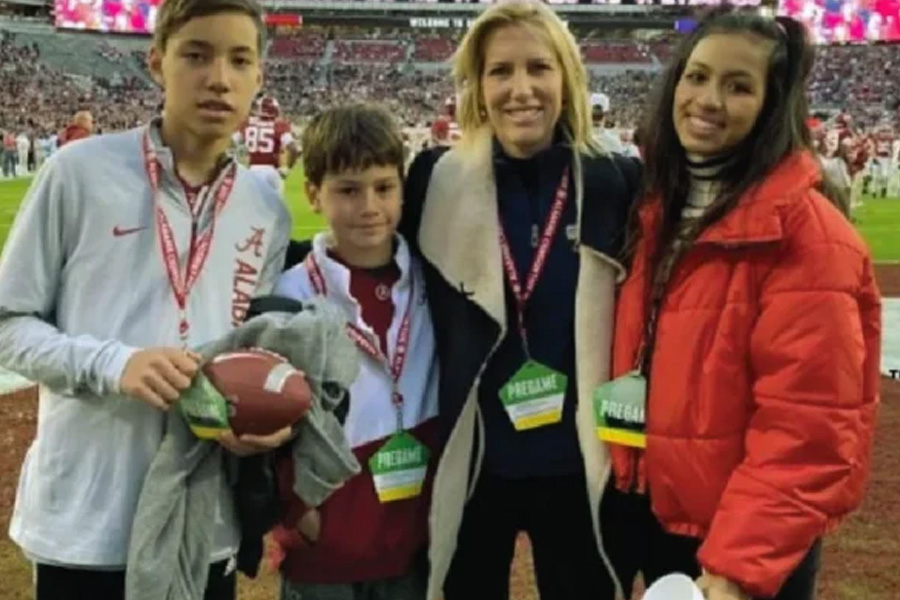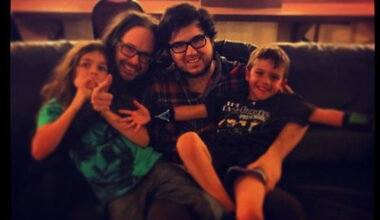Basic Information
| Field | Detail |
|---|---|
| Full name | Michael Dmitri Ingraham |
| Known relationship | Adopted son of Laura Ingraham |
| Adoption year | 2009 (reported) |
| Siblings | Maria Caroline Ingraham (adopted 2008), Nikolai (adopted 2011) |
| Public profile | Private; occasional mentions in family profiles and photo captions |
| Public appearances | Sporadic; family appears in press/photo captions rather than interviews |
| Reported household context | Single-parent household led by a public figure (Laura Ingraham) |
I always start these pieces like a detective with a warm scarf and too much coffee — scanning photo captions, adoption years, and the way a family arranges itself in public frames. Michael Dmitri Ingraham, as his name appears in the public record, lives in that curious space where private childhood meets a public parent: known enough to be named and placed on timelines, unknown enough that the contours of his life are deliberately kept soft.
The family in focus — three adopted children, three soft spotlights
There are three children in the family narrative: Maria Caroline (adopted 2008), Michael Dmitri (adopted 2009), and Nikolai (adopted 2011). Those three dates — 2008, 2009, 2011 — form a tidy trio on the family calendar, like beats in a simple rhythm. Each adoption is a pivot: a new person, a new story, a new set of names to learn and protect. I find that detail almost cinematic — a montage of arrival, the first photograph, the hush of new routines — and it’s where the public and private overlap most visibly.
Laura Ingraham, the family’s public figure, is often described in media shorthand (host, commentator, author). But when reporting touches the family, the tone changes: a softer lens, fewer flashbulbs, and an emphasis on privacy. That matters because Michael’s presence in the media is mostly contextual — he is described as part of the household and the family story rather than as a standalone public actor.
The adoption arc — dates, places, and what they imply
Adoption years anchor any biography. The specifics in this case — 2008, 2009, 2011 — say more than a line item; they mark a sequence of changes in a household. Adoption from different countries, the logistics of travel, and the paperwork of international families are often the backdrop, but the visible narrative here is simple: arrivals within a compressed span of years, integration into family life, and then deliberate privacy.
Those dates also mean something to a writer: they resist the urge to invent exact ages or school lists, and they remind me to keep the focus on verifiable structure — sibling order, family roles, and the way the public parent has navigated visibility.
Career & public life — what’s visible (and what isn’t)
When you look for a career entry for Michael Dmitri Ingraham, you hit a blank that’s more intentional than accidental. There are no public career listings, no LinkedIn profiles with professional milestones, and no verified social-media presence tied definitively to his name. That blank is its own statement: some people in the orbit of fame choose to cultivate privacy, and that choice is as much a part of their public biography as any job title.
Contextually, the household’s primary public income and profile come from Laura Ingraham — television, radio, books — and public estimates around her finances are commonly cited in general reporting, often placed in the tens of millions. But those figures belong to a public figure and should not be read as a personal net worth for Michael. In short: Michael’s personal financial picture is not a public data point.
News, gossip, and social media — the echoes versus the voice
If the internet is an echo chamber, Michael’s corner is quiet. Most mentions occur in family blurbs: a photo caption, an announcement of adoption, an occasional public appearance tied to a family moment. Tabloid permutations do exist — recycled biographies and “meet the kids” roundups — but these are often retellings of the same few facts rather than original reporting. Social media turns up fan pages and recycled images, but no verified, public accounts that can be attributed directly to Michael.
That absence is meaningful. In a world where every teenager (and many adults) curate a public persona, silence can be a form of curation — a boundary set by family and guardians. It’s a reminder that not every name connected to a celebrity is meant to be mined for clicks.
How I think about privacy and public curiosity
Writing about someone like Michael is a balancing act between curiosity and restraint. The cinematic part of me wants to describe the scene: late-night packing for trips, a small hand tracing the edge of a passport, the hush after an arrival. The journalist in me counters with facts: names, adoption years, the broad outlines of public visibility. The wise part — call it ethics — reminds me that a person who is primarily known as “one of the children of” deserves more protection than prose.
So I keep the metaphors and the warmth but avoid prying. Think of it as watching a film from the audience: you can see the key movements, feel the emotional arcs, but you don’t have backstage passes.
FAQ
Who is Michael Dmitri Ingraham?
Michael Dmitri Ingraham is publicly known as one of the three children adopted into the household of Laura Ingraham, with his adoption reported in 2009.
Who are his siblings?
His siblings include Maria Caroline (adopted 2008) and Nikolai (adopted 2011), forming a trio of adopted children in the family.
Is Michael a public figure with a career?
No; there are no verifiable public records of a professional career for Michael, and he appears to maintain a private life.
Does Michael have verified social media accounts?
There are no widely recognized or verified social-media profiles publicly attributed to him, and most online mentions are in family-focused contexts.
Is Michael’s net worth public?
No; there are no public estimates or verifiable figures for Michael’s personal net worth.
How often does he appear in news or media?
Mentions are sporadic and mainly occur in family profiles, photo captions, and occasional public references rather than in standalone stories.



